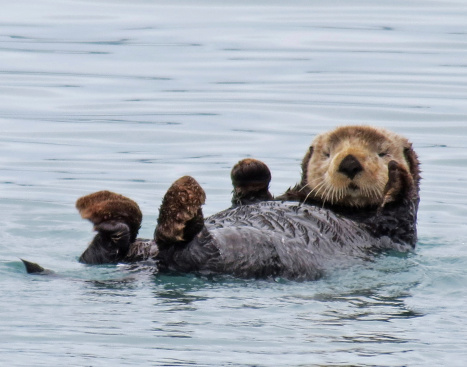By Himasutha Reddy
Texas, July 9: A sea otter is a mammal that is generally about four feet long. These endangered animals are found in the Pacific Ocean. When they’re not in the sea, they’re sleeping or resting on the shore.

Aquatic animals have unique characteristics that help them survive against the cold temperature in the oceans. The blubber (a thick layer of fat below their skin) in whales and dolphins helps them protect themselves from the cold temperature. The blubber helps them to have a warm body temperature irrespective of the temperature outside.
While sea otters do not have blubber, they have very thick fur that helps them maintain their body temperature and act as an insulator. They have the thickest hair when compared to any animal in the world. An insulator helps the warm object (sea otter) stay warm by not allowing the energy to flow outside to a colder object (the ocean). However, this thick layer of fur isn’t enough to maintain their warm body temperature to survive.
According to research published by a team of researchers from the Texas A&M University, the muscles in sea otters help them overcome this. The team collected samples of skeletal muscle from the sea otters of different age groups and measured the oxygen inflow to the muscles using a device called respirometer. The oxygen inflow to the muscle cells was higher than the oxygen inflow to other organisms such as humans and elephant seals.
A cell is the smallest and fundamental building block of all living organisms. Animal cells have an organelle (an organised structure within the cell) called mitochondria that generates energy by taking in oxygen. In mitochondria, during the last stage of respiration (the process through which food and oxygen are broken down into energy in the body), hydrogen protons are pumped across the inner mitochondrial membrane for the formation of molecules known as adenosine triphosphate (ATP), which are filled with energy and transported to the cells that need energy in the body.

Hydrogen protons are hydrogen atoms that do not have an electron (a negatively charged particle in the hydrogen atom) in them and have a positive charge due to the presence of a proton. However, in sea otters, the hydrogen protons further leak across the inner mitochondrial membrane, leading to a higher production of ATP molecules, therefore giving more energy molecules, which generate more heat. Therefore, this is another reason how sea otters help themselves stay warm and survive in the oceans.


